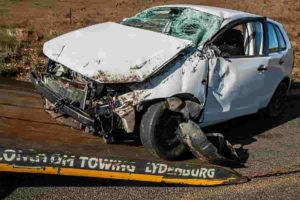 Almost every state requires drivers to carry some form of car insurance, and for good reason. Car accidents are life-changing events that can leave you or your loved ones seriously hurt, and the pressure of hospital bills and lost income will only compound the hardship.
Almost every state requires drivers to carry some form of car insurance, and for good reason. Car accidents are life-changing events that can leave you or your loved ones seriously hurt, and the pressure of hospital bills and lost income will only compound the hardship.
Despite the risk, many people choose to drive without insurance coverage. Roughly 1 in 8 drivers on America’s road in 2015 was uninsured. The percentage of uninsured drivers varies widely from state to state, with certain regions – such as Florida, Mississippi, California, Texas, and New Mexico – reporting some of the highest rates in the country.
Fortunately, there are steps that drivers can take to protect their financial security if they are involved in a crash with an uninsured or underinsured driver. The smartest option is to carry uninsured motorist (UM) coverage. Not only can UM coverage help offset the expense after an accident with an uninsured driver, but it also might pay compensation if you are injured in a hit and run.
How Much Uninsured Motorist Coverage Should You Buy?
The answer to this question varies from one driver to the next. You have to take into account the crash rate in your state, the rate of motorists who choose to drive without insurance, your state’s minimum insurance requirements, and your ability to pay out of pocket for your damages if needed.
How Does Uninsured Motorist Coverage Work?
You can find a comprehensive answer to this question here: https://pennygeeks.com/blog/how-does-uninsured-motorist-coverage-work/.
Most states require drivers to carry liability and/or collision insurance coverage. If you are involved in an accident with a driver who does not have liability insurance, an uninsured motorist coverage policy can help cover your losses. If the driver has insurance but the policy limits are too low to pay for your damages, UM coverage should help offset the difference.
Just like when you choose liability coverage, you have options when it comes to selecting your UM policy limits. Your insurance company may also allow you to choose specific UM coverage limits for bodily injury and property damage. For example, if you drive a cheap care but you want to make sure you have plenty of coverage for medical care, you can choose low coverage limits for property damage and high limits for bodily injury.
Do You Really Need Uninsured Motorist Coverage?
Depending on where you live, uninsured motorist coverage may be a legal requirement. Mandatory requirements for uninsured or underinsured motorist coverage are in place in 20 states and the District of Columbia, and over half the states are actively implementing verification systems to identify uninsured motorists.
Here’s another reason to purchase UM coverage: You could face a steep fine and possible loss of your driver’s license if you are caught driving while uninsured. The specific penalties vary by state.
In some states, you cannot file a personal injury claim unless you have the minimum required car insurance coverage. This rule applies even if you were not at fault for the crash.
